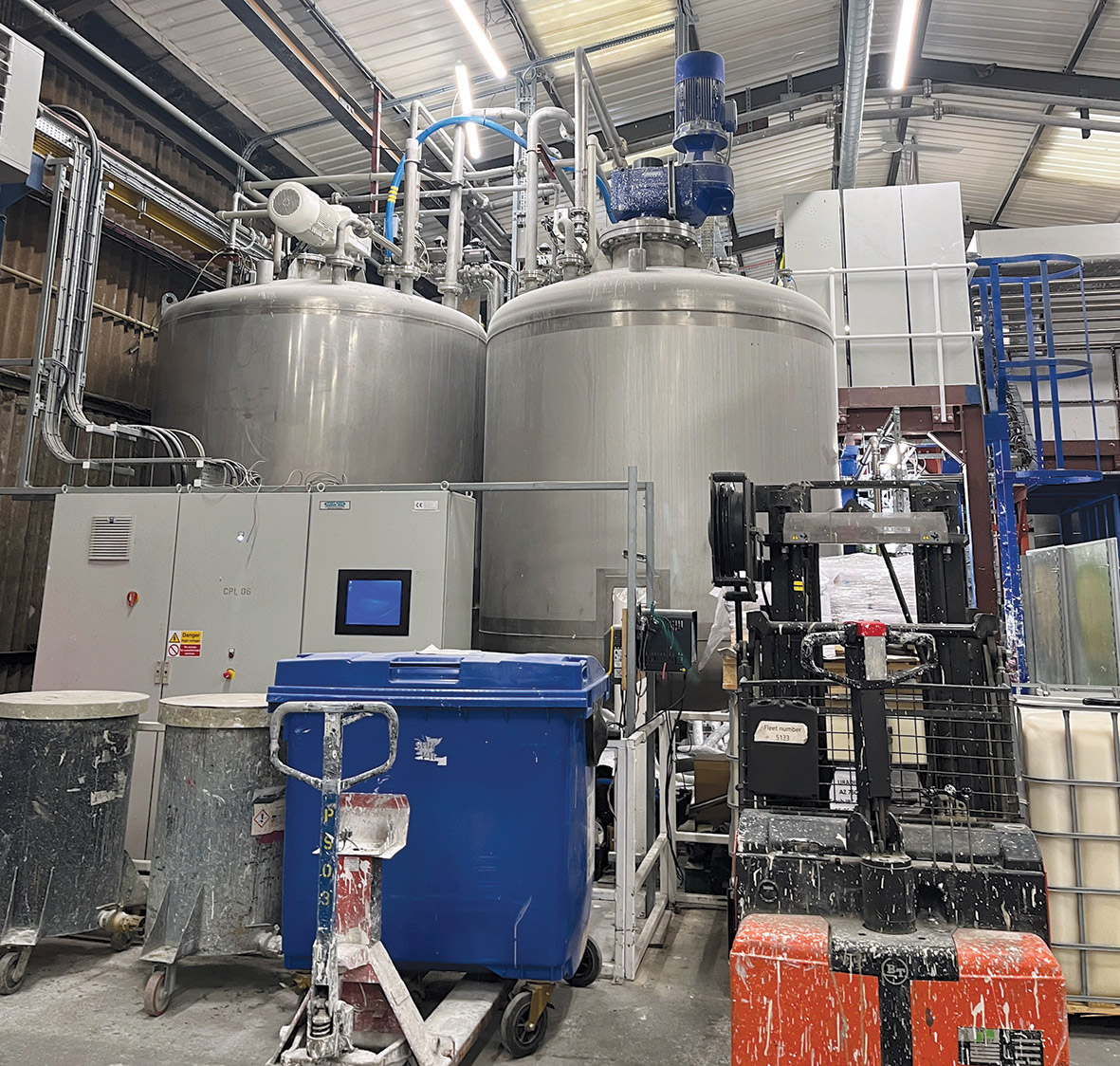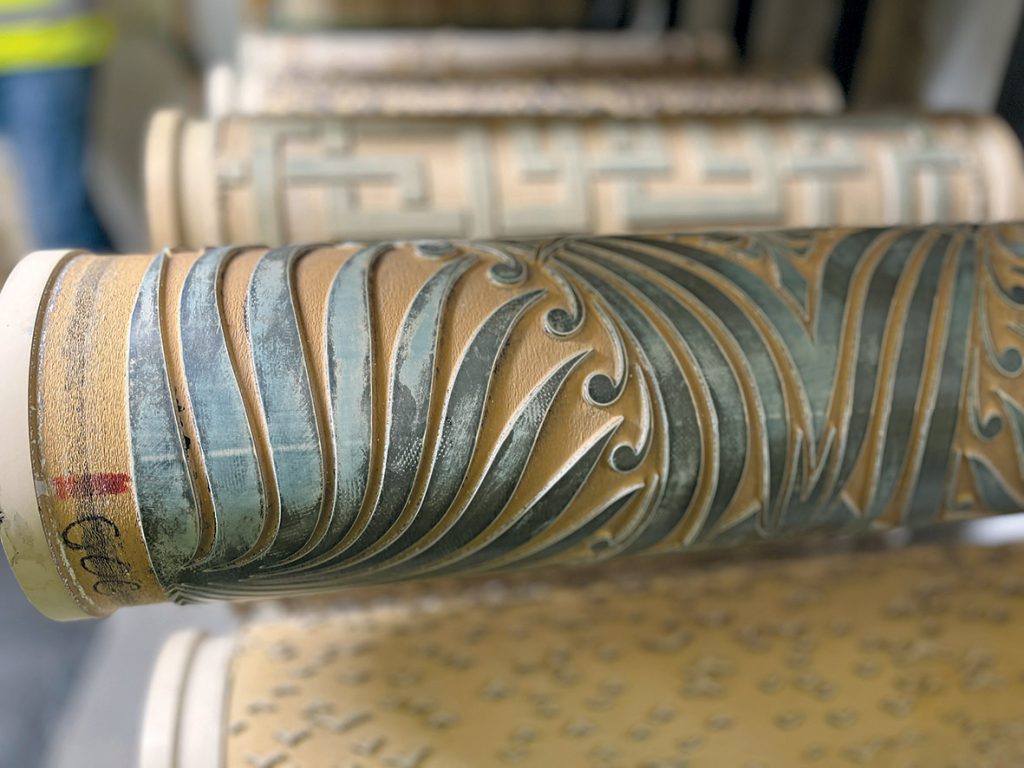
Heavy rain in Dorset did not stop play when The Decorator Magazine was treated to a factory floor tour of Farrow and Ball paint and wallpaper production and an afternoon meeting with the experts who formulated the paint and put it through the testing process.
A lot goes on in the world of paint manufacturing before it comes to an endpoint of putting on surfaces, and Farrow and Ball are no exception. Behind the glossy lookbooks, the world of paint manufacture is a bit more messy and real.
With a history of paint making going back to 1946, and like some other well-known historic brands, it was Mr Ball and Mr Farrow and their respective wives who started the enterprise. Their desire to make rich colours and quality paints from the finest ingredients continues today. It’s a testament to this ethos that in 2024, Farrow and Ball achieved their B Corp Certification after a lengthy and thorough assessment of their social and environmental performance, accountability and transparency.
Making durable, high-quality paint is at the heart of the company. Still, they strive to improve formulations and their supply chain ingredients – looking at the whole production process. For example, their paint’s high amount of titanium dioxide gives the signature opacity and responsiveness to light. It also means that they are aware of the environmental impact of its production. As a relatively small company manufacturing paint from start to finish, they can decide where the raw materials come from and who they choose as their suppliers.
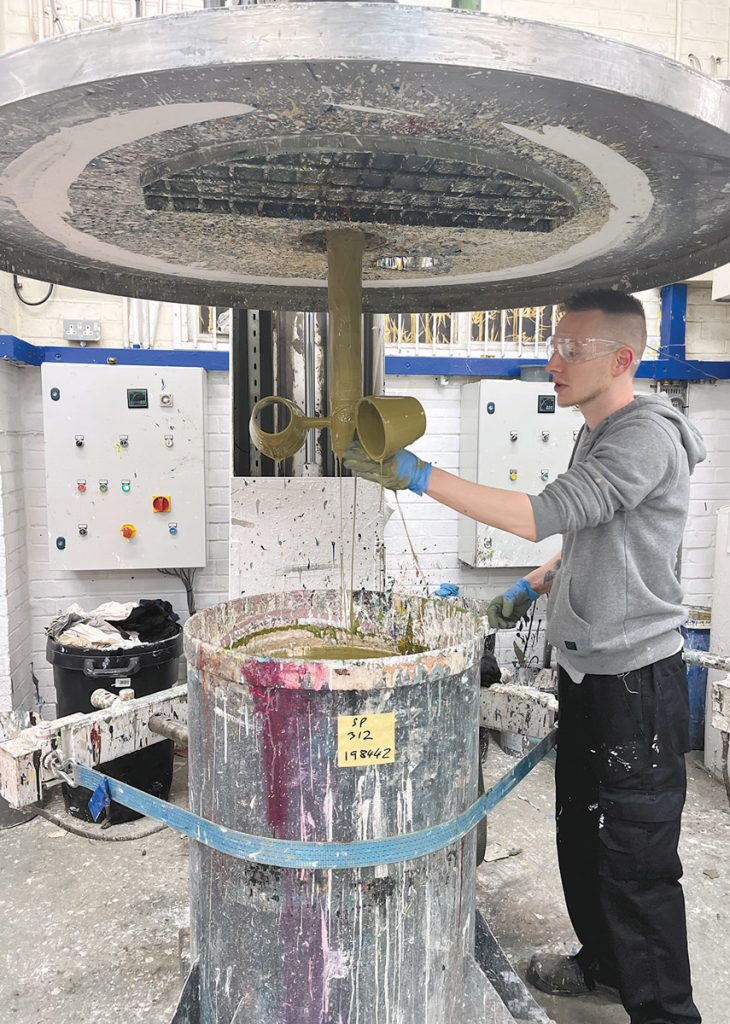
Continuous improvement is a key ingredient, along with testing to ensure the paint does what it’s supposed to and bringing out new formulations in response to feedback. The new technology in the factory sits alongside their small-batch manufacturing so that they can keep a more handcrafted approach. Ensuring Volatile Organic Compounds (VOCs) are at trace or low levels ensures their paint does not impact air quality for both decorators and homeowners. They have recently found ways to reduce VOCs even further, and their Dead Flat and Modern and Estate paints are now ranked ‘Trace’ by the British Coatings Federation.
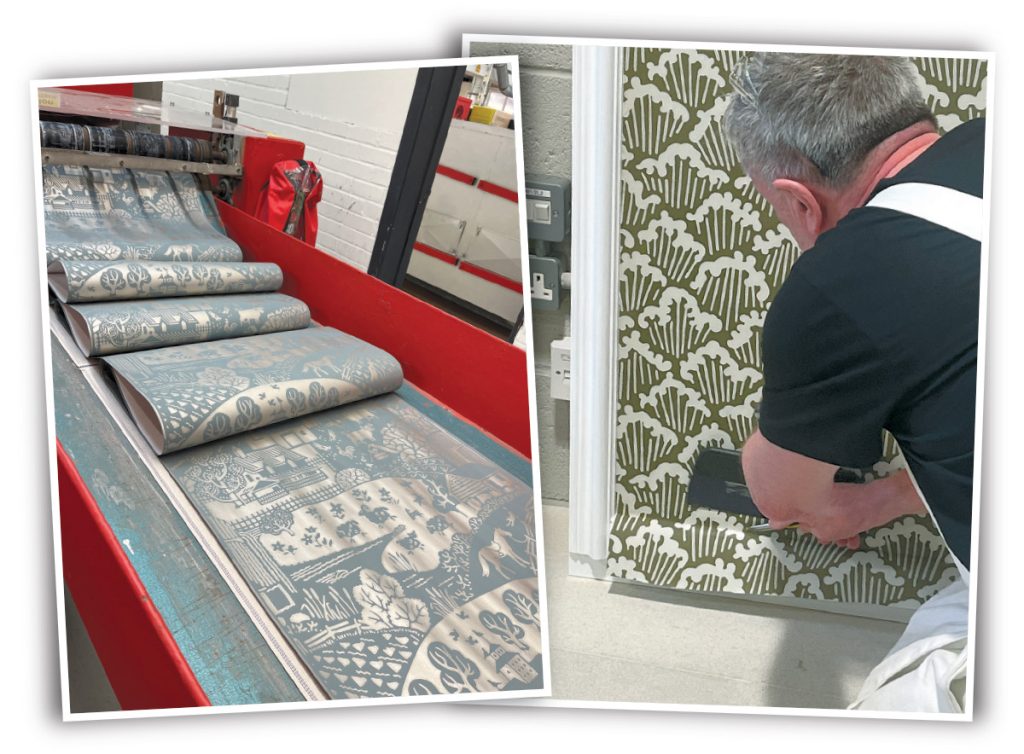
Of course, they still make their iconic wallpapers. Using high-quality paper, plastic-free and sourced from responsibly managed forests, the production lines are either set up for block printing down onto the paper or a template roller design.
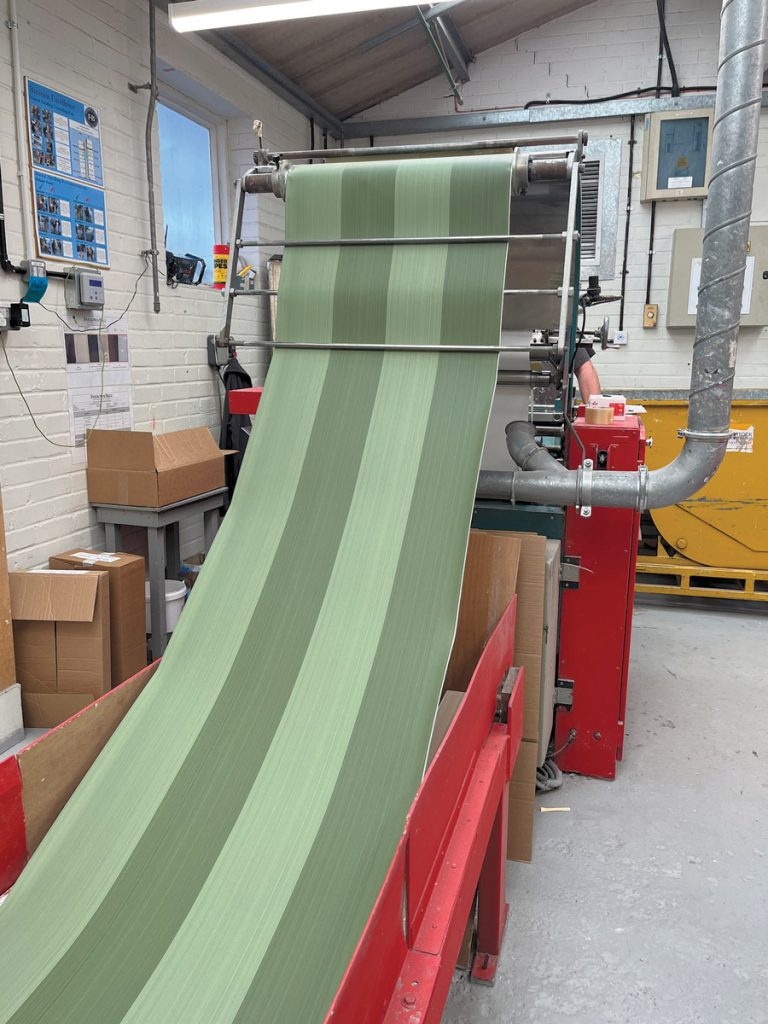
Each line is handled meticulously, with operatives looking for imperfections in the roll as the paint goes onto the paper – And yes, it is Farrow and Ball water-based paints being used to print onto the paper, not a digital scan. All the papers are then finished with a layer of protective glaze with no PVC or plastic coating.
Given how the wallpaper is made, it’s understandable that they are very keen to ensure decorators read and follow their instructions on pasting and hanging the paper. We were treated to a masterclass from Wayne Armstrong on how to hang their paper expertly. He did make it look straightforward, but he’s been decorating and paper hanging for many years.
Farrow and Ball want to get feedback from the professional decorating community. It may not say it on the tin, but they are keen to point out that their paint is trade class, and they acknowledge that while it’s not for everyone’s budget, it is quality that will last.
